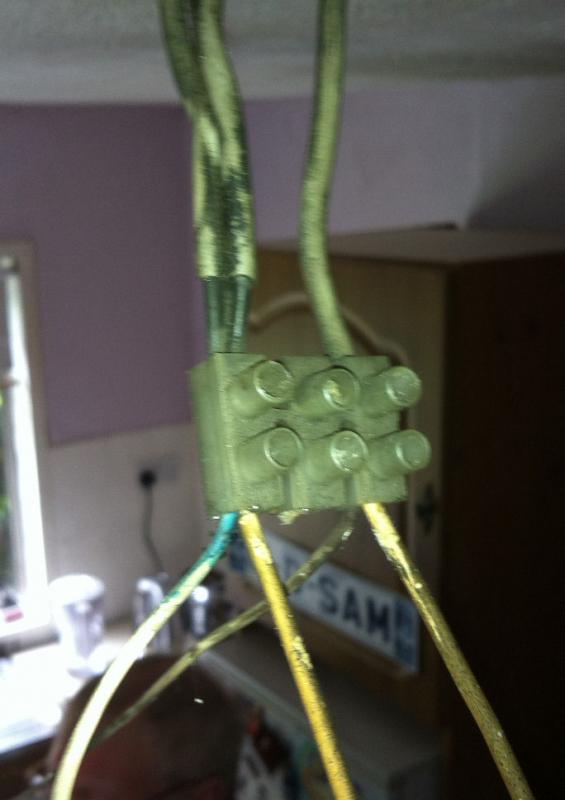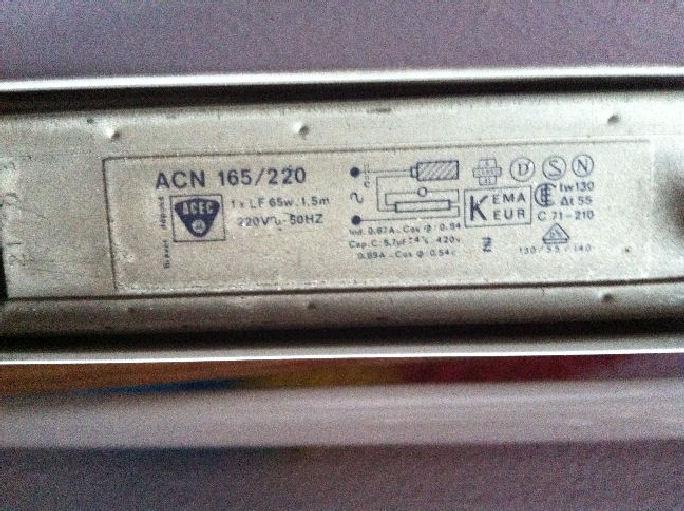am trying to replace an old flurescent light with a new fixture in the kitchen.
When I removed the flurescent light I had 4 cables exposed. None identified, and all just the same grey colour. all wires are separate !!
Please see pic attached that I took before removing the Flurescent fixture.
3 wires were connected together while another wire was on its own.
So basically a 2 wire system for the flursecent light.
New light fixture requires L N and E.
I attached 3 wires to N and the single wire to N. The light doesn't come on.
Can someone help me to identify each wire?
There are 2 light switches in the kitchen. one for this light and the other for a outdoor Garden light. Are these connected together ?
At the moment, I removed flurescent light fixture and just have the cables wrapped together as they were when the flurescent light was in place but now even the outdoor light will not come on.
I also attach a pic of the inside of the flurescent light .
Any help please.
Ray
When I removed the flurescent light I had 4 cables exposed. None identified, and all just the same grey colour. all wires are separate !!
Please see pic attached that I took before removing the Flurescent fixture.
3 wires were connected together while another wire was on its own.
So basically a 2 wire system for the flursecent light.
New light fixture requires L N and E.
I attached 3 wires to N and the single wire to N. The light doesn't come on.
Can someone help me to identify each wire?
There are 2 light switches in the kitchen. one for this light and the other for a outdoor Garden light. Are these connected together ?
At the moment, I removed flurescent light fixture and just have the cables wrapped together as they were when the flurescent light was in place but now even the outdoor light will not come on.
I also attach a pic of the inside of the flurescent light .
Any help please.
Ray




